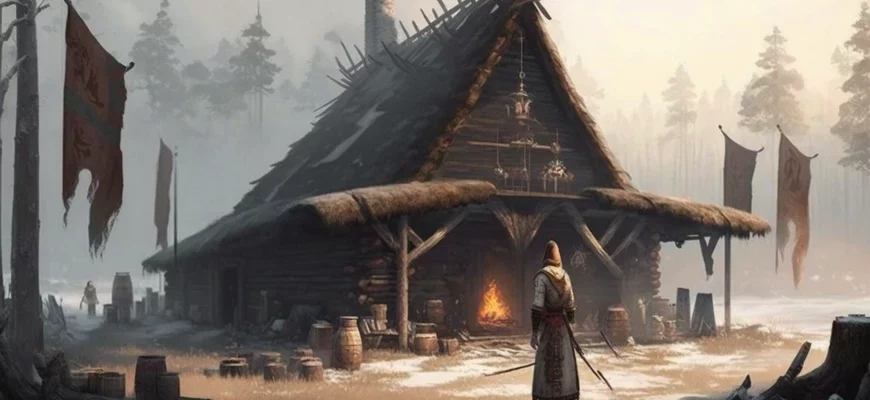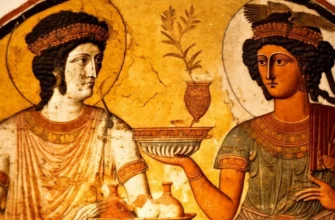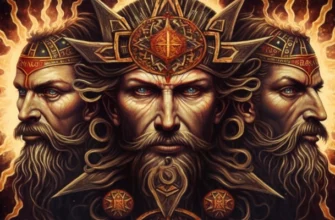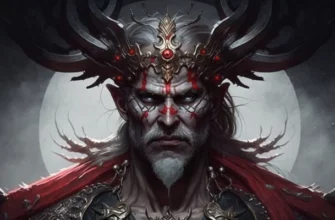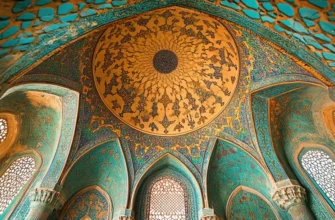The Slavs are one of the largest ethnic groups in Europe with a complex and interesting history. The existence of Slavic civilization can be traced back to the 4th-5th centuries AD.
Scientists link the origin of the Slavs to the East European Plain, more precisely to the territory of modern Ukraine and southern Russia. It is known that the Slavs were a diverse people with different territorial and ethnic groups.
During their existence, the Slavs became the founders of many well-known cultures, such as the Kyivans, Galicians, Rusyns, Czechs, Poles, and others. In the 10th century, Slavic principalities began to group together into larger states, such as Kievan Rus, Poland, Bohemia, and others.
One of the main features of Slavic civilization is national identity and cultural diversity. The Slavs had their own language, which differed from other European languages, their own music, dances, and folk customs. They were also known for their skills in various fields, such as architecture, crafts, and agriculture.
Although Slavic civilization experienced great turbulence during a period of foreign invasions and the collapse of principalities, the Slavs managed to preserve their identity and cultural heritage. Today, Slavs live in different countries, but their shared history and culture remain an important part of world history. Their contribution to the development of humanity lies in the colonization of territories, the development of agriculture and trade, and the creation of new scientific, literary, and artistic works.
In addition, the Slavs played an important role in shaping the cultural heritage of Eastern and Central Europe. Among the most famous works that have become landmarks of Slavic culture are “The Tale of Bygone Years” (Kyiv Rus), the works of Jan Komensky (Czech Republic), the poetry of Adam Mickiewicz (Poland), the works of František List (Slovakia), and many others.
In the modern world, Slavs continue to develop their culture and community. They collaborate in many fields, including science, technology, art, and sports. Slavic culture is an important component of the world’s cultural diversity, helping to preserve and promote the historical heritage of the peoples of Europe and the world as a whole.
Culture and art of the ancient Slavs
The ancient Slavs had a rich culture and art that reflected their religious, social, and ethnic traditions.
The art of the ancient Slavs was distinguished by such areas as folk art, decorative art, painting, sculpture, and architecture. The national characteristics of the art of the ancient Slavs were manifested in woodworking, carving, pottery, embroidery, weaving, and other crafts.
The painting of icons and church walls deserves special attention. Their motifs are closely related to Christian symbolism and images of saints. Wall paintings and icons largely depicted biblical scenes and scenes from the lives of saints.
The ancient Slavs also showed great interest in poetry. Many of them became known as folk poets. Poetry reflected various aspects of life, from work and war to love and nature.
In terms of architecture, the ancient Slavs built wooden temples decorated with bas-reliefs and paintings. Stone structures were rare, but those that remain testify to a high level of craftsmanship and technical sophistication.
It is also worth mentioning ancient Slavic mythology and religion. They believed in many deities that reflected various aspects of life and nature. Religious rites and traditions were also of great importance in the culture of the ancient Slavs. One of the most famous rites was the celebration of Kolyada, which symbolized the arrival of winter and the birth of new life. Another important holiday was Yarilo, which was celebrated in the spring and symbolized the rebirth of nature and life.
The culture of the ancient Slavs also included magical and healing practices based on beliefs in the powerful forces of the spiritual world and nature. These practices were often associated with rituals and traditions that were passed down from generation to generation.
All these aspects of the culture and art of the ancient Slavs reflected their worldview and attitude towards the world. They are preserved in the folk traditions and cultural heritage of the Ukrainian people to this day, confirming the high level of development of the ancient Slavic civilization.
Religion and mythology of the Slavs
The religion and mythology of the ancient Slavs were quite complex and multifaceted. They believed in polytheism, which consisted of a large number of deities, each of which had its own function and sphere of influence on people’s lives and nature.
One of the main gods in the pantheon of the ancient Slavs was Perun, who symbolized a formidable god who possessed strength, courage, and martial prowess. Another important god was Svarog, who was considered the father of the gods and the patron of crafts and activities related to fire.
Ancient Slavic mythology also includes such deities as Dazhbog, who symbolized the sun and light, Mokosh, the goddess of female beauty and fertility, and Chornobog, who was considered the opposite of Svarog and symbolized darkness and evil.
The culture of the ancient Slavs also featured various rituals and ritual objects associated with religious beliefs and mythology. For example, the symbol of Perun was a bonfire lit during the celebration of the spring equinox, and talismans against evil forces were symbolic images of deities and other objects that had magical powers.
All these aspects of the religion and mythology of the ancient Slavs are important components of their cultural heritage, and they have been preserved in Ukrainian folk tradition and culture to this day.
The influence of the ancient Slavs on European history
The ancient Slavs had a significant influence on European history. Their culture and history are linked to the period when modern Europe was emerging.
One of the most famous contributions of the ancient Slavs to European history is their role in the creation of the Principality of Kyivan Rus, which was one of the largest and most influential states in medieval Europe. Founded in the 9th century, the Principality of Kyiv became a center of culture, science, and politics, and its influence on Europe was great.
The ancient Slavs also played an important role in the development of trade and cultural exchange in Europe. They were familiar with the various peoples living in what is now Europe and maintained ties with them, which helped them to conclude trade agreements and interact culturally.
The ancient Slavs also had a significant influence on the formation of Eastern and Central European cultures. The Slavic language, literature, music, folk traditions, and other aspects of the culture of the ancient Slavs have been preserved in Ukrainian, Belarusian, Russian, Polish, and other Eastern European cultures to this day.
In general, the influence of the ancient Slavs on European history can be compared to that of other great cultural powers, such as the Roman Empire and Greek civilization.
Another important contribution of the ancient Slavs to European history was their military experience and battle strategies. They were known for their military skills and ability to organize large military campaigns. Their techniques for manufacturing weapons and combat equipment were quite advanced, which allowed them to be effective in battles with other peoples.
The ancient Slavs also contributed to the development of Christianity in Europe. Their missionary work contributed to the spread of Christianity in Eastern and Central Europe. In particular, the founding of Kievan Rus contributed to the formation of the Orthodox Church in Russia and Ukraine.
Many European languages also retain Slavic roots. For example, words such as “cheese,” “bread,” “house,” “river,” and many others are of Slavic origin. The ancient Slavs also left their mark on European folklore and art, where their legends, fairy tales, and other works are an integral part of European culture.
Thus, the ancient Slavs left their mark on European history in many different aspects, such as politics, culture, military strategy, and religion. They are an important part of the cultural and historical heritage of modern Europe.
Conclusions and prospects for research into the ancient civilization of the Slavs
Research into the ancient civilization of the Slavs is of great importance for understanding the cultural and historical heritage of modern Europe. Through archaeological excavations, the study of ancient manuscripts, and other sources, we can gain a deeper understanding of the life and culture of the ancient Slavs.
One of the main conclusions of the research is that the ancient Slavs were a fairly developed civilization with their own language, religion, technologies, and culture. They were capable of trade, exploration of new territories, and international interaction.
Another important discovery is that the ancient Slavs influenced the history of Europe and contributed to the formation of modern European culture and language. They left their mark on folklore, art, and language, and their religious and cultural heritage continues to exist to this day.
However, there are still many questions that need to be researched. For example, some aspects of the religion and mythology of the ancient Slavs remain mysterious, and the history of their interaction with other peoples and states of Europe requires further study.
In general, the study of the ancient Slavic civilization is an important step in understanding the cultural and historical heritage of modern Europe. Research can contribute to improving mutual understanding and cooperation between the peoples of Europe, as well as help preserve and protect the cultural heritage of the ancient Slavs and their contribution to the formation of modern European culture.
In addition, the growing interest in the culture and history of the ancient Slavs can play a positive role in fostering national consciousness and identity in Ukraine, Russia, and other countries where Slavic culture has a significant historical and cultural heritage.
In general, research into the ancient civilization of the Slavs is of great importance both for science and for society as a whole. It helps to expand our knowledge of the cultural and historical heritage of modern Europe and can also play a positive role in shaping national identity and consciousness.
